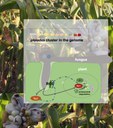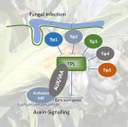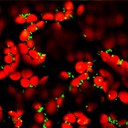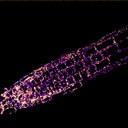of the corn smut fungus Ustilago maydis suppresses plant immune defense in maize. In reference to the "sisterly" division of tasks as effectors and the clustered occurrence in the genome, the genes were named after the Pleiades, the nymphs originating from Greek mythology and the eponymous star cluster.
The pleiades gene cluster in the Ustilago maydis (corn smut) genome encodes a family of proteins, the Pleiades, that target maize immunity. The two Pleiades Taygeta1 (Tay1) and Merope1 (Mer1) inhibit Reactive Oxygen Species (ROS) production, albeit in different cell compartments. Additionally, Mer1 acts in the nucleus to modify the activity of RFI2 homologues (Red and Far-Red Insensitive 2), a family of enzymes involved in early immune responses and that govern flowering time in plants.
Julia Klöckner presented PhytoMo coordinator Dr. Anna Kicherer and Prof. Dr. Reinhard Töpfer (Julius Kühn-Institut) with the BMEL funding notification (from right)
News from the Institute for Crop Science and Resource Conservation (INRES).
digital technologies help on the way to sustainable crop production.
The molecule Topless (TPL) normally suppresses auxin signaling (AUX) in the plant. The fungus's five Tip effectors remove this inhibition, allowing the corn cells to grow and divide.
In a "competition" in the Arkadenhof, scientists from the Clusters of Excellence present their research in an entertaining way. Here is an archive image from the past Slam 2018.
The interior of the mitochondria (matrix) is marked by a fluorescent protein.


















